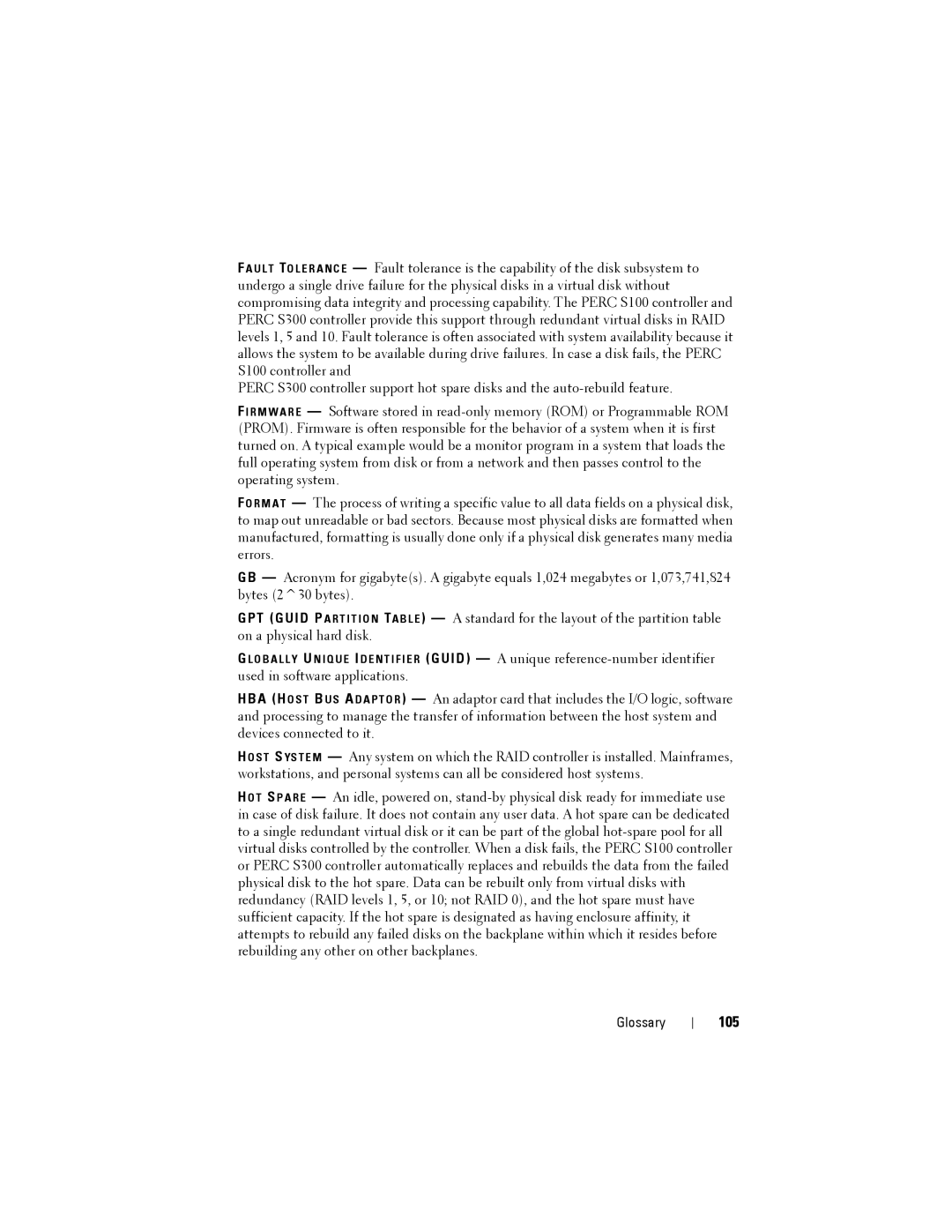F A U L T TO L E R A N C E — Fault tolerance is the capability of the disk subsystem to undergo a single drive failure for the physical disks in a virtual disk without compromising data integrity and processing capability. The PERC S100 controller and PERC S300 controller provide this support through redundant virtual disks in RAID levels 1, 5 and 10. Fault tolerance is often associated with system availability because it allows the system to be available during drive failures. In case a disk fails, the PERC S100 controller and
PERC S300 controller support hot spare disks and the
F I R M W A R E — Software stored in
F O R M A T — The process of writing a specific value to all data fields on a physical disk, to map out unreadable or bad sectors. Because most physical disks are formatted when manufactured, formatting is usually done only if a physical disk generates many media errors.
GB — Acronym for gigabyte(s). A gigabyte equals 1,024 megabytes or 1,073,741,824 bytes (2^30 bytes).
GPT (GUID P A R T I T I O N TA B L E ) — A standard for the layout of the partition table on a physical hard disk.
G L O B A L L Y U N I Q U E ID E N T I F I E R (GUID) — A unique
HBA (H O S T B U S A D A P T O R ) — An adaptor card that includes the I/O logic, software and processing to manage the transfer of information between the host system and devices connected to it.
H O S T S YS T E M — Any system on which the RAID controller is installed. Mainframes, workstations, and personal systems can all be considered host systems.
H O T S P A R E — An idle, powered on,
Glossary
